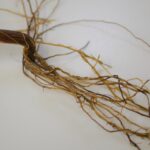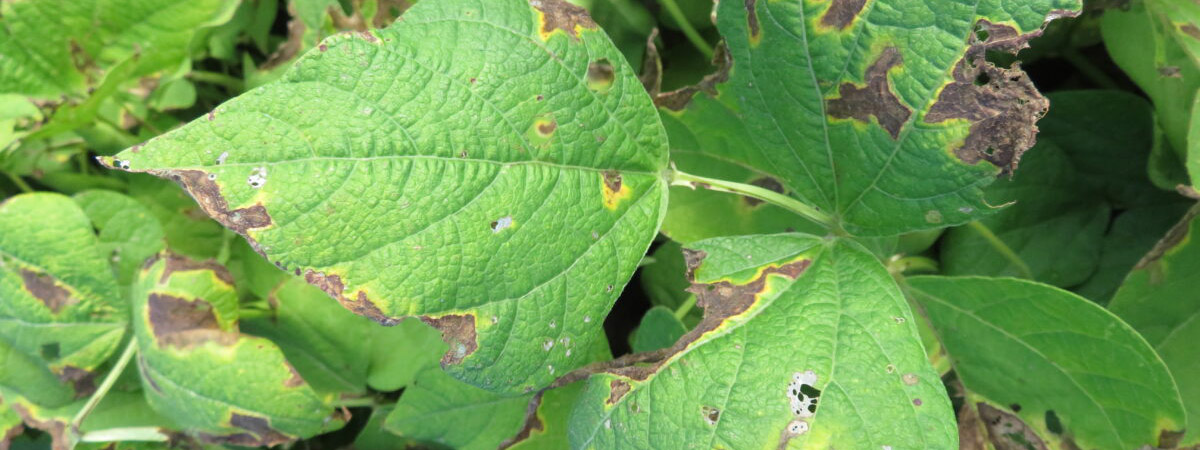A rotation where beans are grown only once in 3 years (or longer) is essential to avoid the build-up of diseases. The most common diseases encouraged by short rotations are root rots and white mould (Sclerotinia). Soybean, canola, potato and sunflower are poor rotation choices with beans since they are all susceptible to white mould. Root rots are challenging to control through rotation, because they have a wide crop-host range. The organisms that cause root rots are often invasive, infecting plants that are under stress.
Soil compaction, poor drainage, frequent cropping to beans, and other factors cause plant stress that favours root rot. Dry edible beans are also hosts for soybean cyst nematode (SCN). Adzuki beans are particularly susceptible to SCN. For additional information about SCN and other dry edible bean diseases, see OMAFRA Agronomy Guide for Field Crops, Diseases of Field Crops or search the disease articles on this site. For information on disease control options for dry beans, see the OMAFRA Field Crop Protection Guide.
Bean dealers and buyers may stipulate the crop protection products that are permitted to be used, based on the maximum residue limit (MRL) approval of importing countries. Producers need to check their production contract or guidelines and speak with their dealer for a list of approved products.
General preventative measures:
1. Thoroughly wash all equipment used for cleaning, conveying or planting seed with detergent to remove all soil. Then disinfect equipment with a quaternary ammonium compound or sodium hypochlorite (for example, 10% Javex). Rinse off the disinfectant with clean water to limit rusting of treated surfaces.
2. Use a 3–4 year rotation with non-related crops.
3. Do not apply manure containing bean refuse to land intended for beans.
4. Stay out of bean fields when the foliage is wet to avoid spreading diseases.
Recent Articles
 Root Rot Complex November 5, 2020 - Root rot complex (Fusarium solani, Rhizoctonia solani, Pythium spp. , Chalara basicola) Incidence Numerous organisms cause root rot symptoms on… Read More
Root Rot Complex November 5, 2020 - Root rot complex (Fusarium solani, Rhizoctonia solani, Pythium spp. , Chalara basicola) Incidence Numerous organisms cause root rot symptoms on… Read More